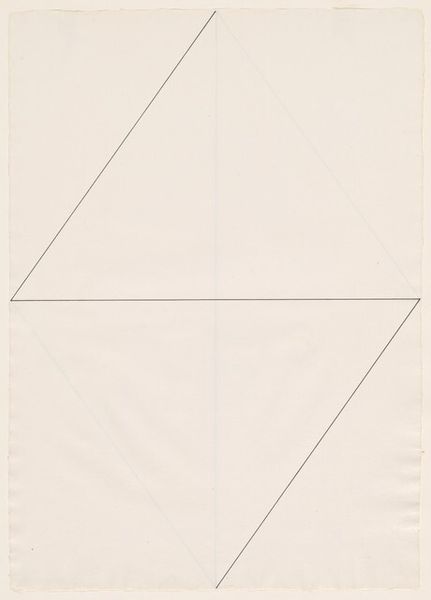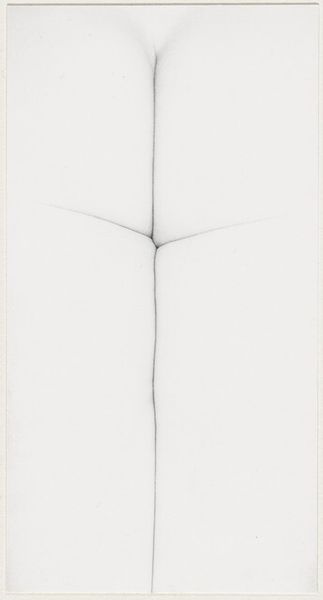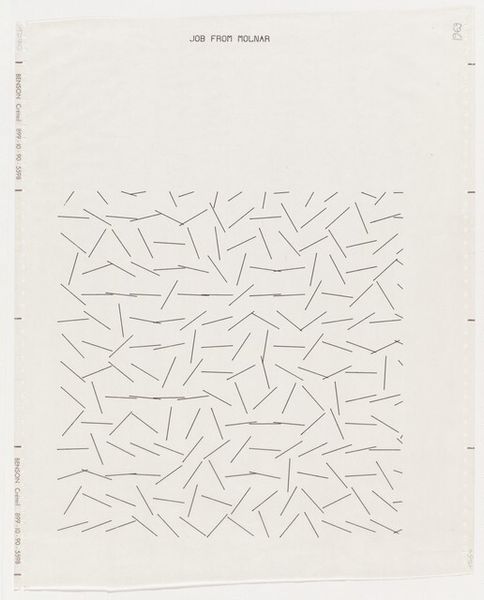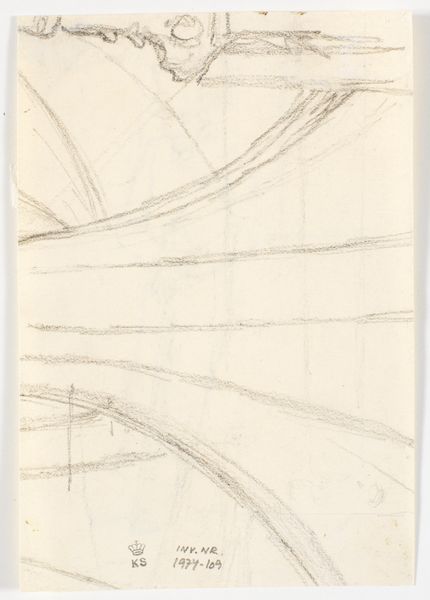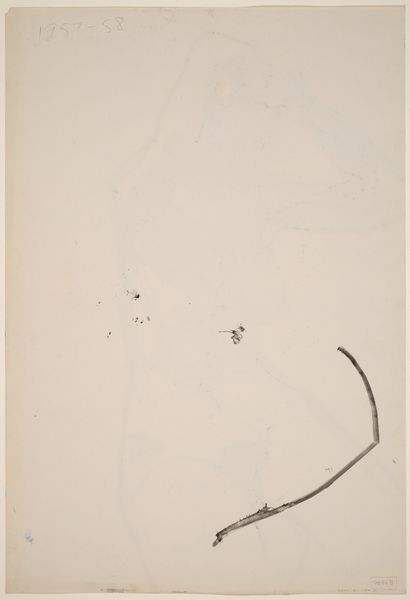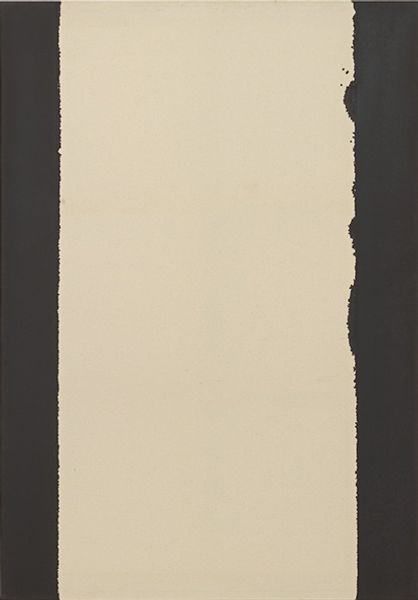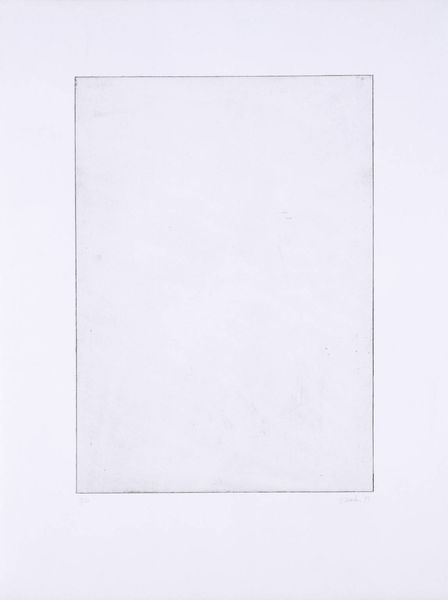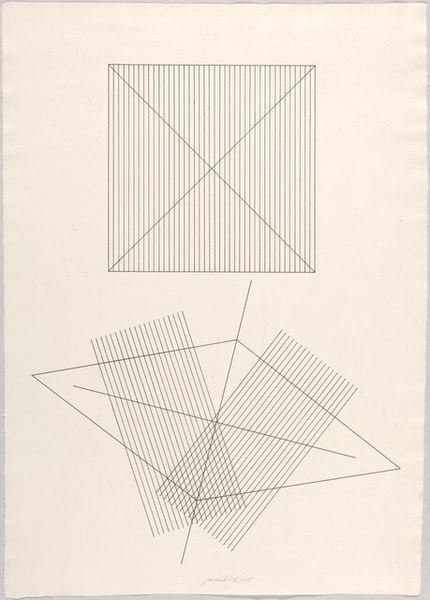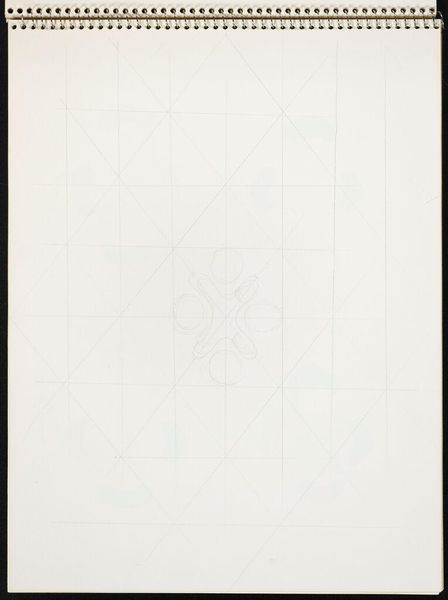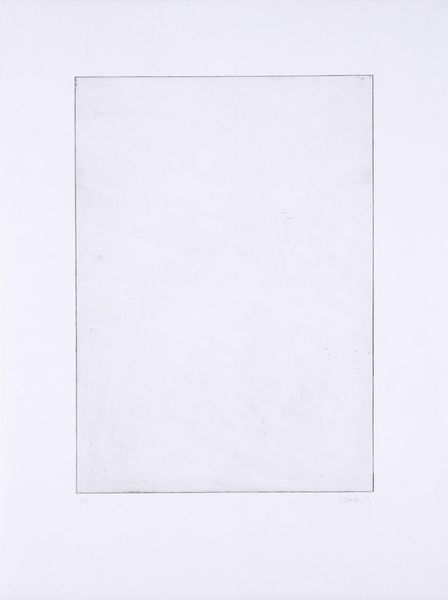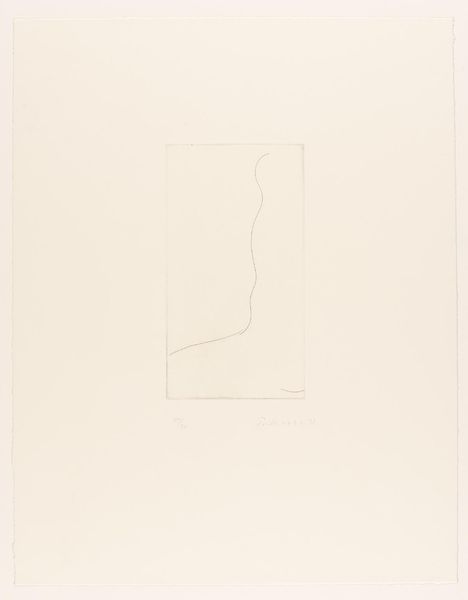
drawing
#
drawing
#
conceptual-art
#
minimalism
#
geometric
#
abstraction
#
line
Dimensions: image: 59 x 42 cm (23 1/4 x 16 9/16 in.)
Copyright: National Gallery of Art: CC0 1.0
Curator: Standing before us is Jan Kubicek’s “Elementary Principles #4,” created sometime between 1970 and 1975. It’s a drawing that dives deep into the concepts of minimalism and geometric abstraction. Editor: Well, my initial impression is… spare. Utterly, rigorously spare. Just a square containing a diagonal line, it’s stark simplicity makes it quite visually arresting in its own way. Curator: Exactly. It challenges the conventional understanding of art. Kubicek’s work is very concerned with exploring fundamental forms and lines to push the boundaries of visual language, but this piece has very clear ties to historical trends within Czech art making. How do we consider it in our moment? Editor: This almost demands that the viewer participate, actively constructing meaning from so little visual data. Looking at this now I start to see how the grid, these simple gestures, could speak to rigid systems in a society—maybe that was at play here in Czechoslovakia at the time? Curator: Absolutely. Placing "Elementary Principles #4" within the political context of Czechoslovakia during the 70s reveals fascinating dimensions. Conceptualism became a form of subtle resistance, employing abstraction to critique structures without directly confronting the regime. Editor: Yes. Conceptual art like this also invites questions about artistic intention. Where did Kubicek position this in relation to his contemporaries like Sol LeWitt? What did radical simplicity mean within the network of artists in that era? Curator: It becomes this intersection where philosophy, identity, and even resistance subtly converge. Kubicek uses minimalism as a language to express ideas beyond the surface. The act of drawing itself could be a claim to individuality and defiance against enforced conformity. Editor: That’s insightful. Thinking about "Elementary Principles #4" this way encourages us to investigate art not merely as aesthetic experience but as embedded political statements, revealing intricate power dynamics from its era. Thank you. Curator: Likewise. Understanding art through multifaceted lenses expands our appreciation for the complex stories artworks communicate.
Comments
No comments
Be the first to comment and join the conversation on the ultimate creative platform.
